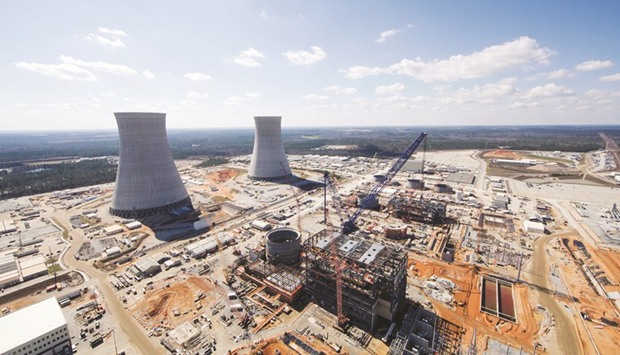Toshiba Corp’s Westinghouse Electric Co unit will continue operating normally in Asia and Europe, despite the ongoing Chapter 11 restructuring, an executive at the troubled company said yesterday.
Westinghouse filed for bankruptcy last month, hit by billions of dollars of cost overruns at four nuclear reactors under construction in the United States.
Despite the filing, the company will continue existing projects in China and pursue others, focusing on engineering and procurement rather than construction, said Gavin Liu, Westinghouse’s president for Asia, at an industry event.
The plan was to decouple the US AP1000 nuclear reactors from the rest of Westinghouse’s operations, which he said was “very healthy and profitable.”
“The rest of the Westinghouse business, the healthy part, which is new plant construction, fuel, service, decommissioning – we anticipate an ownership change,” Liu said, adding that there has been “high interest from the financial community”.
A source with knowledge of the issue told Reuters that about 10 potential bidders had shown interest, including Western Digital Corp, rival Micron Technology Inc, South Korean chipmaker SK Hynix Inc and financial investors.
The Trump administration and Japanese government are in discussions to ensure that its bankruptcy does not lead to US technology secrets and infrastructure falling into Chinese hands.
Four 1,000 megawatt medium-sized nuclear reactor designed by Westinghouse are under construction in China, which is increasing its use of the energy form as it seeks to limit the country’s reliance on other power sources such as dirty coal.
Liu said that the first AP1000 units in Sanmen and Haiyang were moving into the final stage of fuel loading and the Sanmen unit was on track to be put in commercial operation by the end of this year.
“As long as the first unit is on line commercially, that is the foundation for the industry and the government to approve future AP1000 units,” he said.
He added that Westinghouse was not concerned about competition from China’s domestically-developed third-generation reactor, Hualong One.
“Hualong is a Chinese indigenous design based on China’s early years experience in the nuclear area.
It reflects the Chinese industry’s own capabilities,” he said.

The Vogtle Unit 3 and 4 site, being constructed by primary contactor Westinghouse, a business unit of Toshiba, near Waynesboro, Georgia. Despite the bankruptcy filing, the company will continue existing projects in China and pursue others, focusing on engineering and procurement rather than construction, said Gavin Liu, Westinghouse’s president for Asia, at an industry event.


